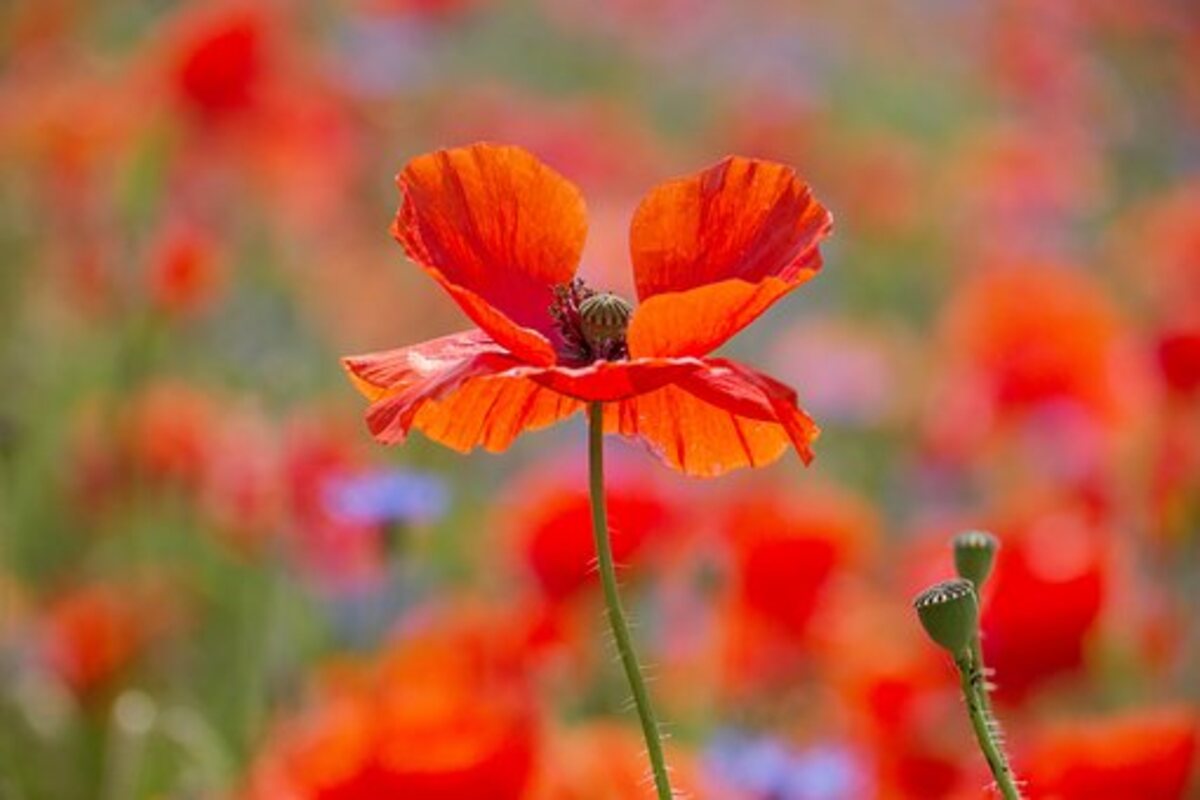Tips for Making a Poppy Wreath
Poppy wreaths are popular and can be made for various holidays and special occasions. Find the best poppy pods for sale.
Learn how to make a dried poppies wreath with poppy pods using a variety of helpful crafting tips and ideas.
Making a beautiful wreath is a craft skill that is best attempted when following the proper instructions, similar to cooking or painting. First, it necessitates a solid foundation that serves as the framework for all decorative material, such as dried poppy pods, that will be added later. The delicacy of the floral materials is then matched to the appropriate base. Although numerous materials can be used for a bottom, three, in particular, are considered the most popular.
Poppy Wreath with a Wire Base
First, bend a regular coat hanger into a circle to make this. This is a massive advantage because the coat hanger has a natural hook at the top that can hang the wreath once it’s finished. Wire of varying strengths is readily available at your local hardware store.
When two complete circles of wire are joined together, they can provide a surprisingly strong framework for heavier floral wreaths like pine cones, dried apples, or even evergreens. Thinner professional florist wiring should be used for more delicate wreaths, such as making a cherry blossom or red peony crown. Try wrapping the wire wreath base with decorative ribbon or florist tape to disguise it.
A wire base allows you to add floral materials in clumps or small bundles. First, gather a bunch of flowers and bits of greenery and place them on the wireframe to accomplish this. You quickly follow that by securing them with a thin, bendable florist’s wire. Please remember that you should not cut the wire at this point but rather overlap the joining part with a separate cluster of flowers and greens and continue to wrap your way around the entire frame in a circular motion.
Some people prefer poppy wreaths with materials organized in a continuous circle, with all clusters facing in the same direction. To finish this type of wreath, tuck the joining part of the end cluster under the first cluster. In addition, in other types of poppies wreaths, you can work down both sides to have the bundles meet at the bottom. This arrangement will leave a bare spot, quickly covered with a ribbon or a braid/bow of your existing floral materials.
These are often used for much lighter materials, such as bird feathers or ivy leaves because they are delicate. To make attractive and intriguing poppy wreaths, use a firm piece of wire and thread it directly through more extensive materials such as red chillis or apples in a lengthwise position.
Poppy Wreath with a Vine Base
Because you use living organic materials rather than metal, this type has a much more natural appearance. Grapevine, Wisteria, and Honeysuckle are some of the most popular vines for poppy wreaths. If you can get these materials brand new and fresh, they can be coiled together into a circle and left to dry before making a wreath. If you can’t find any fresh vines, that’s fine because you can soak the ones you do have in water until they’re flexible enough to shape.
When using a vine-based wreath, you can often insert your flowers and green leaves into the numerous small cavities within the wreath, saving you the trouble of using sticky tape or metal wiring. You can use a regular string if you need a securing device but still want to keep the organic wreath look.
For those who are pickier about this, a morning glory flower can secure your floral materials. The best results are still obtained using freshly picked vines because they retain that malleable quality that makes them much easier to work with.
Poppy Wreath with a Straw Base
Straw material creates a much stronger base but is also significantly heavier. Straw wreaths can be purchased at most craft stores or made by wrapping straw in a ring-shaped form and binding it with string or the same straw to create a more natural appearance.
One benefit of using a straw base is that you can stick decorative materials directly into the straw itself, such as florist’s picks, or long, thin stems from some of your existing floral materials. Another option is to use a glue gun to attach various items. However, remember that this will make your wreath permanent, as opposed to the previously mentioned method, where the added items can still be removed if you change your final product.
The straw material provides a convenient and appropriate backdrop for the wreath’s brightly colored additions and overall appearance. Gathering a few strands of straw into three thick strands and weaving these into one thick braided wreath produces a much more stunning and practical wreath.
The variety of creative arrangements made with a poppy wreath makes it a versatile craft project that can be used for almost any occasion. Poppy wreaths are popular for all holidays and seasons. There are numerous tips and techniques for making your one-of-a-kind poppies wreath. In a herb wreath, for example, the neutral color of a dried poppy pod helps to bring out the stronger shades of the marjoram, pink pepper berries, and marigold.
The distinctive shape of a dried poppy flower complements the design of any poppy wreath. More miniature poppy wreaths, which may include the neutral color of small poppy pods to complete floral materials such as the purple shade and pale lavender, can create an enchanting atmosphere in any room of your home. A medium ovoid dried poppy pod’s neutral shade can also complement a Christmas poppy wreath by emphasizing the bolder colors of the greenish herbs and red winter.
Read Also: The actual Coffee Controversy: Health Advantage Or Hazard?


